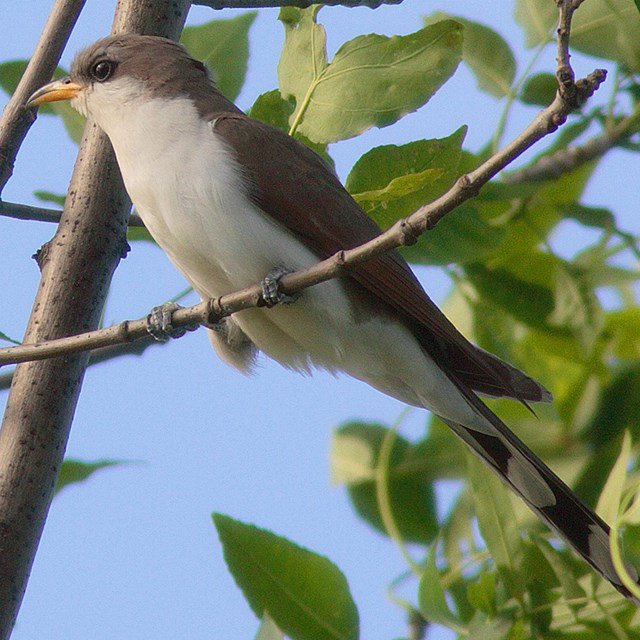For Immediate Release, April 20, 2021
|
Contact: |
Brian Segee, (805) 750-8852, bsegee@biologicaldiversity.org |
Western Yellow-billed Cuckoo Gains 298,845 Acres of Protected Critical Habitat in Seven Western States
TUCSON, Ariz.— The U.S. Fish and Wildlife Service today designated 298,845 acres in Arizona, California, Colorado, Idaho, New Mexico, Texas and Utah as critical habitat for the western yellow-billed cuckoo.
“We’re thrilled these beautiful birds are finally receiving protections for their streamside homes,” said Brian Segee, a senior attorney at the Center for Biological Diversity. “While not perfect, this designation includes many of the cuckoo’s most important remaining nesting areas in Arizona, New Mexico and other western states.”
The imperiled songbird once ranged widely in the western United States but has declined precipitously, with only an estimated 800 pairs remaining. The Center has worked for the birds’ protection for more than two decades, first submitting a scientific petition to list them under the Endangered Species Act in 1998, and most recently reaching a settlement with the Service requiring this final critical habitat designation.
After more than a decade of delay, the Fish and Wildlife Service finally listed the western cuckoo as threatened in 2014. The agency also proposed the protection of more than half a million acres of the species’ critical habitat but failed to finalize the designation. Today’s designation stemmed from a smaller proposal under the Trump administration and was further reduced by more than 172,000 acres of “exclusions” in the final designation.
“We’re disappointed the Fish and Wildlife Service willingly excluded so many key areas rather than give the cuckoo even more habitat protection,” said Segee. “This failure reflects the real need for the Biden administration to bring in new leadership and reform the agency.”
The yellow-billed cuckoo depends on healthy streamside areas for breeding, nesting and feeding. Its disappearance from vast expanses of its former habitat is due largely to the damming of rivers, development, water withdrawal and livestock grazing. Climate change also threatens the cuckoo with increased drought. Pesticide use and collisions with communication towers and other tall structures further imperil the bird.
Critical habitat designation requires federal agencies to avoid actions that result in damage or destruction of the bird’s habitat.
Background
The western yellow-billed cuckoo winters in South America and summers in the western United States and parts of Mexico and Canada. Its range has drastically contracted, with the species no longer occurring in most of the northern half of its range in the West.
Today the bird survives in scattered locations in small numbers, including along California’s Sacramento, Eel and Kern rivers; the Colorado, Gila, Verde and San Pedro rivers in Arizona; New Mexico’s Gila and Rio Grande rivers; and scattered locations in Colorado, Idaho, Nevada, Texas, Wyoming and Utah. Historically the cuckoo was common from the shores of Lake Washington in Seattle to the mouth of the Colorado River.
The cuckoo is a visually striking bird whose long tail has flashy white markings. It is one of few species that can eat spiny caterpillars, such as tent caterpillars, which adults and their chicks gorge on in spring and summer.

The Center for Biological Diversity is a national, nonprofit conservation organization with more than 1.7 million members and online activists dedicated to the protection of endangered species and wild places.

